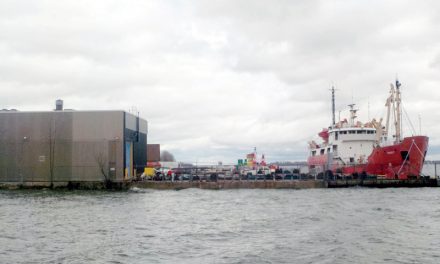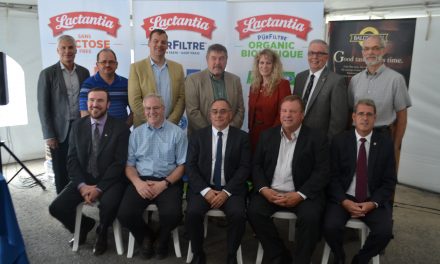by Jakob Vogel, B.Sc (Agr.)
AgriNews Contributor
With growing market pressure and the need to improve and maximize labour efficiencies on Canadian dairy farms, there are seemingly endless building projects happening around the countryside. Along with the actual realization of the project, many discussions and brainstorming sessions occur. Unfortunately, when many producers are asked about their building projects, the first question asked is “Robot or parlour?” –as if this is the biggest question the producer has to decide.
Throughout this article, I hope to touch on some of the most common questions asked of producers during a build, but more importantly, arm producers with questions that they should be asking themselves as well as others within the team, including the engineer or contractor group.
Although many producers have become conditioned to responding to the simple robot or parlour questions, there are many other points of discussion that are typically more important than the choice of milking system. Some of these questions may include:
- When is the right time to expand?
- Where should I start?
- For whom should I build?
- Is it feasible to expand?
- What do I expect to gain from the build?
Focusing on the last question a little more, we often need to break this down even further to better understand the motivation behind the expansion or the building plan. The goal or expectation from a building project can easily be broken down into short-term and long-term goals; base the timeline for these two categories, for simplicity’s sake, on year-one goals, and “the rest.”
When setting any goal, it is important to keep them realistic. Additionally, you should have your long-term goals in mind before any building plans are confirmed. The entirety of the management team, including the vet, nutritionist, hoof trimmer, etc., should have a chance to look over the barn plans to address any major concerns.
Let’s use a real example. A new milking facility is being built for a current herd size of 50 cows (plus eight dry cows and 40 heifers). The goal of the farmer is to increase the cow numbers by 50 per cent (to have 75 cows milking) in addition to purchasing of quota that has been happening over the past five to seven years. The producer in our example has decided to install robots as their preferred milking system. Now that the scene is painted, the design has come back in a three-row layout with 78 stalls for milking cows. Behind the robot, we have a special needs/fresh cow pen (with five stalls) and a dry cow pen (one group) with 10 stalls.
This example is quite realistic, and may not seem to be a problem at all without knowing the rest of the situation. However, there are some red flags that should start to pop up as you read over the given scenario:
First, is there enough space for the dry cows? Remember that we want to increase the herd size by 50 per cent. That being the case, we would need to also increase the number of dry cows, leaving us with at least 12 dry cows on any given day. Already, we are shorting our dry cows on stall space, let alone bunk space.
Other concerns: How are the fresh cows getting access to the robot? Are there any dead ends in the dry cow/fresh cow pen? Where are the cows set to calve? Will they easily be accessible to the robot or have a milk line into the calving pen? Will there be enough water access (minimum two points of water per pen), with adequate linear space?
Understanding that milking stalls are those that are being paid for quickly, we tend to forget the “behind the scenes” cows that will eventually come into the milking line. Other points of focus that were not addressed at all during this design would focus on the calves (nursery), heifers and/or dry cow facilities. Similarly, even when building somewhat “smaller” projects, we often underestimate the room required to get the best job possible.
Some tips when planning a new build or expansion:
Ask questions. When investing any large sum of money, no question is a stupid question.
Visit other operations. Although this will take time out of your already hectic schedule, realize that what works for some producers may not work for you. It is better to get an idea of what would work for you before pouring concrete. Not only are changes later on more expensive, they seldom becoming realized.
Allow others to review the plans to try to point out any blind spots. It is sometimes difficult to visualize the plans and see the blind spot when the novelty and excitement are fresh in your system.
I hope this article has given you better questions to ask. Arm yourselves with additional questions to make sure that there is limited remorse when moving to a brand new facility. Remember to set realistic goals, and work with your team to achieve those goals.












